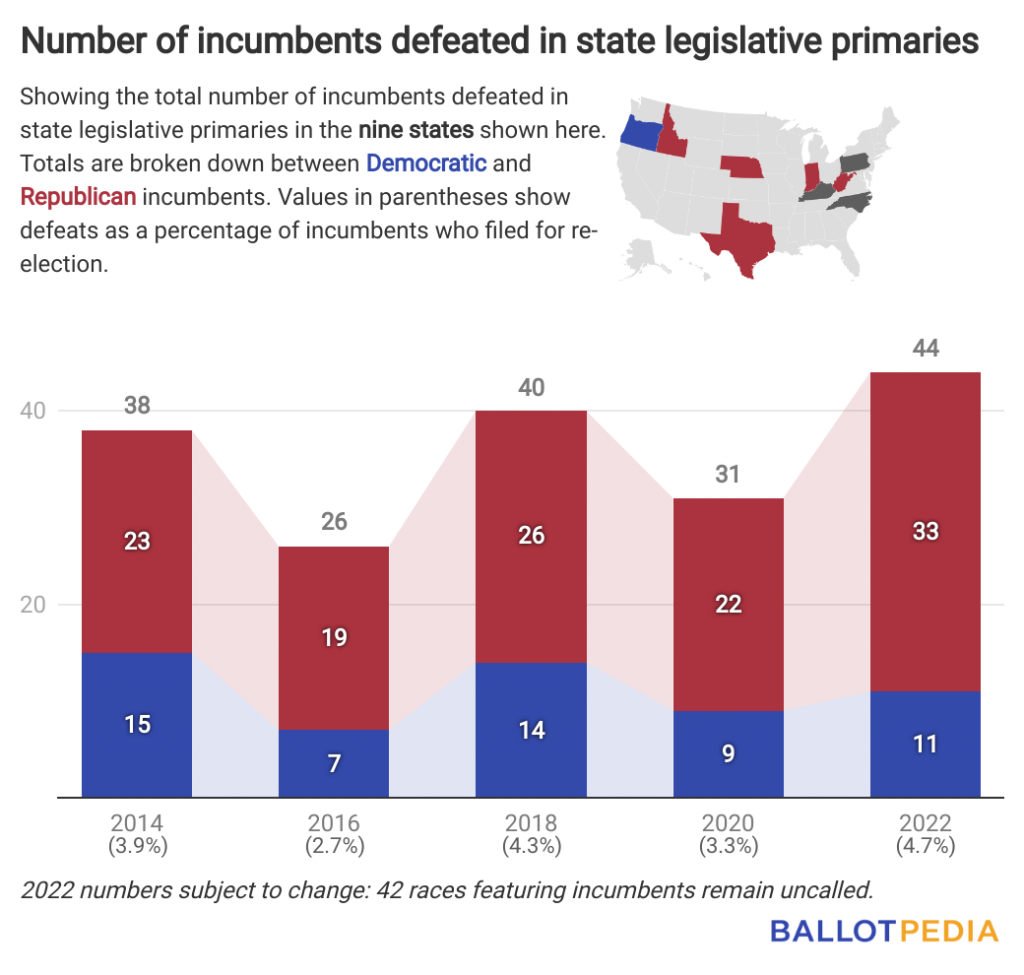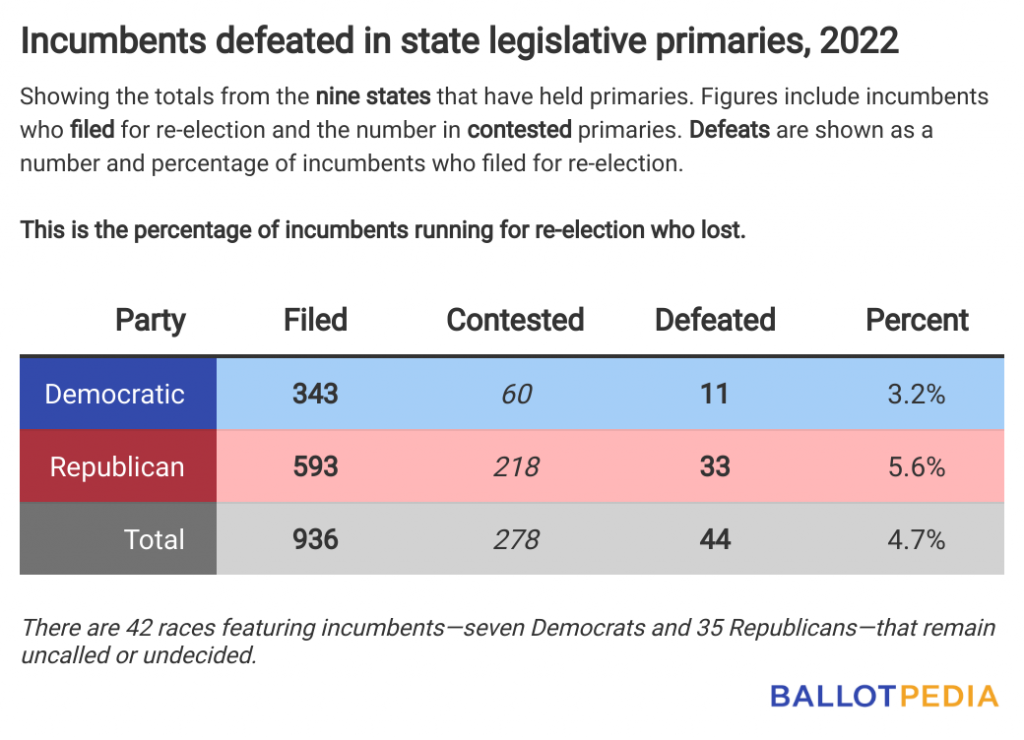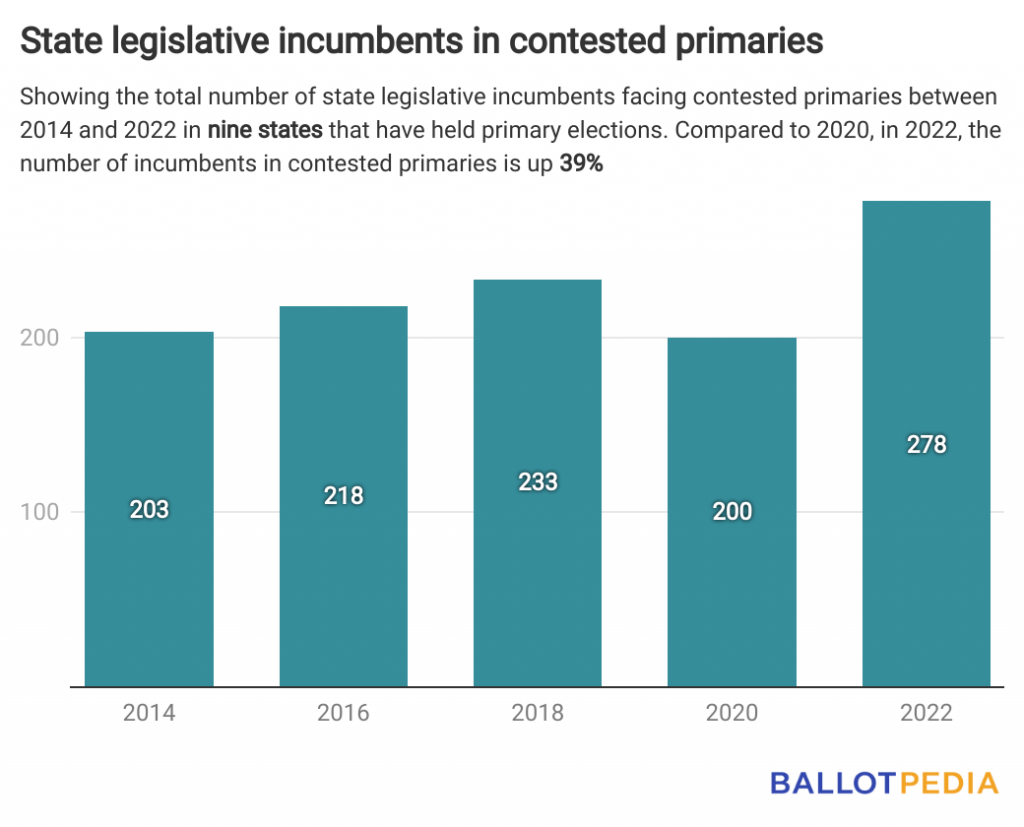So far this year, 44 state legislative incumbents—11 Democrats and 33 Republicans—have lost to primary challengers.
Across the nine states that have held primaries, 4.7% of incumbents running for re-election have lost. This is both the largest number and highest incumbent loss rate in these nine states since 2014.

So far this year, the loss rate has been higher for Republicans than for Democrats. Of the 593 Republican incumbents seeking re-election, 33 (5.6%) lost in primaries. For Democrats, 11 of the 343 incumbents running (3.2%) lost to primary challengers.

However, fewer Democratic incumbents are facing primary challengers than their Republican counterparts. Around 17% of Democratic incumbents faced contested primaries compared to 37% for Republicans.
Overall, among those nine states, 936 incumbents filed for re-election, and 278 (30%) faced contested primaries. This is the largest number since 2014.

Sixteen of the incumbents who lost primaries so far were due to redistricting. When states redraw legislative lines, incumbents can oftentimes end up in a new district with other incumbents leading to incumbent v. incumbent primaries or general elections.
- Idaho (2): Sen. C. Scott Grow (R) defeated Sen. Steven Thayn (R). In the House, Rep. John Vander Woude (R) defeated Rep. Greg Ferch (R).
- Indiana (3): Sen. Kevin Boehnlein (R) defeated Sen. Gary Byrne (R). In the House, Rep. Craig Snow (R) defeated Rep. Curt Nisly (R) and Rep. Bruce Borders (R) defeated Rep. Jeff Ellington (R).
- Kentucky (3): Reps. Jim Gooch Jr. (R), Bobby McCool (R), and Josie Raymond (D) defeated Reps. Lynn Bechler (R), Norma Kirk-McCormick (R), and Mary Lou Marzian (D), respectively, though Marzian had unofficially withdrawn before the primary.
- North Carolina (4): Sens. Ralph Hise (R) and Norman Sanderson (R) defeated Sens. Deanna Ballard (R) and Bob Steinburg (R), respectively. In the House, Reps. Ben Moss (R) and Jake Johnson (R) defeated Reps. Jamie Boles (R) and David Rogers (R), respectively.
- Texas (1): Rep. Claudia Ordaz Perez (D) defeated Rep. Art Fierro (D).
- Pennsylvania (1): Rep. Christopher Rabb (D) defeated Rep. Isabella Fitzgerald (D).
- West Virginia (2): Rep. Ric Griffith (D) defeated Rep. Chad Lovejoy (D) and Rep. George Miller (R) defeated Rep. Ken Reed (R).
Of the nine states that have held primaries so far, one had a Democratic trifecta, five had Republican trifectas, and three had divided governments with Democrats controlling the governorship and Republicans controlling both legislative chambers. Across these nine states, there are 1,114 seats up for election, 18% of the nationwide total.
The figures for 2022 will likely increase. There are currently 37 primaries featuring incumbents—six Democrats and 31 Republicans—that remain uncalled. Additionally, there are five primary runoffs in Texas scheduled for May 24 with incumbents present.
You can view a full list of defeated incumbents and defeat totals from previous years by clicking “Learn More” below.


